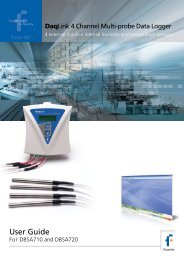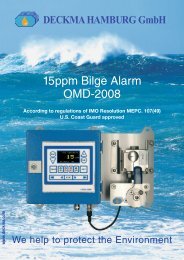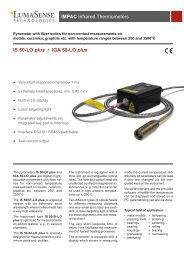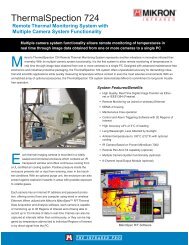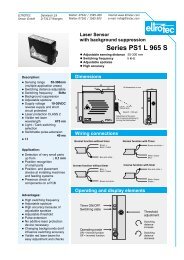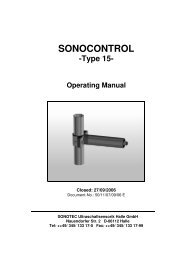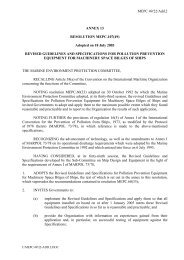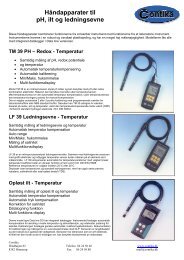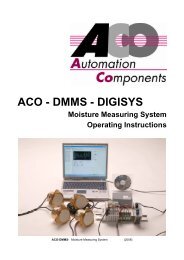Pyrometer- Handbook - Contika
Pyrometer- Handbook - Contika
Pyrometer- Handbook - Contika
Create successful ePaper yourself
Turn your PDF publications into a flip-book with our unique Google optimized e-Paper software.
2-colour pyrometers are used for difficult measuring tasks.<br />
• high temperatures<br />
• blocked views or interference in the atmosphere (for<br />
example, smoke, suspended matter)<br />
• the object is smaller than the spot size (down to 10% of<br />
the spot size)<br />
• changing, low, or unknown emissivity (for example,<br />
molten metal).<br />
In order to measure both signals various constructions are<br />
used:<br />
1. Sandwich detector<br />
2. Two separate detectors with different filters<br />
3. One detector with a rotating filter wheel<br />
The disadvantage of a pyrometer with a rotating filter<br />
wheel is that the signals do not arrive simultaneously. The<br />
calculation of the ratio in the pyrometer increases the<br />
sensitivity toward changing signals in one of the two<br />
detectors. If there are quickly changing temperatures or<br />
moving objects a 2-colour pyrometer with rotating filter<br />
may record an inaccurate temperature.<br />
To measure temperatures of bright flames (the most<br />
common type of flame) flame pyrometers have been found<br />
to work well. The radiation coming to the pyrometer stems<br />
from glowing soot or other burning particles. In this case,<br />
the soot factor “n” must be set on the pyrometer in order to<br />
record the correct measurement.<br />
<strong>Pyrometer</strong> <strong>Handbook</strong><br />
bright flames<br />
flame<br />
pyrometers<br />
35



